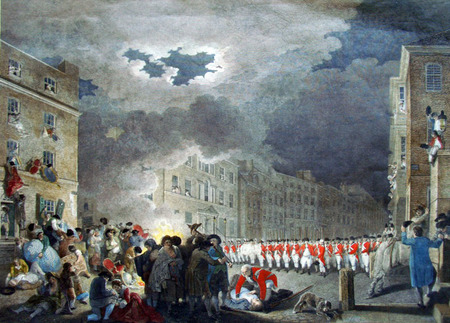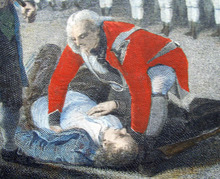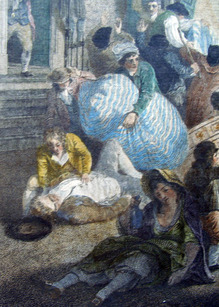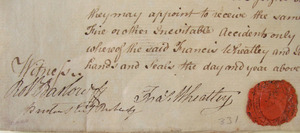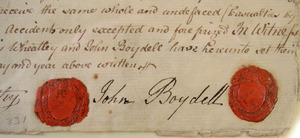James Heath (1757-1834) after Francis Wheatley (1747-1801), The Riot in Broad Street, 1790. Hand colored engraving. Graphic Arts 2011- in process
The British Parliament passed the first Act for Catholic Relief in 1778 and the following year, Lord George Gordon (1751-1793), president of the London Protestant Association, formed a campaign in opposition. On June 2, 1780, Gordon and 60,000 protesters marched for the withdrawal of Catholic emancipation.
In the following days about 100 buildings owned by Roman Catholics or by the Catholic Church were looted or burnt down. The Bank of England, Buckingham Palace and Downing Street were all attacked. On June 7, the militia was called in; nearly 450 people were arrested and 300 were shot.
A few years later, the artist Francis Wheatley (1747-1801) was inspired to paint the scene and on April 13, 1784, print publisher John Boydell (1719-1804) entered into a contract with Wheatley to use his painting as the basis for a large engraving. The original contract can be seen in the collection of William H. Tower, Class of 1894 (1871-1950) in Firestone Library (CO911, Box 7, folder 30). Boydell paid Wheatley £210 for the loan of the painting to make prints he then sold for 1 guinea each. James Heath (1757-1834) was commissioned to engrave the copper plate.
Before the work was completed, there was a fire at Heath’s house and the painting was destroyed. Unfortunately, the contract stipulates that Boydell was responsible to return the work, barring “Fire or other Inevitable Accidents.” The engraving was issued in 1790.
